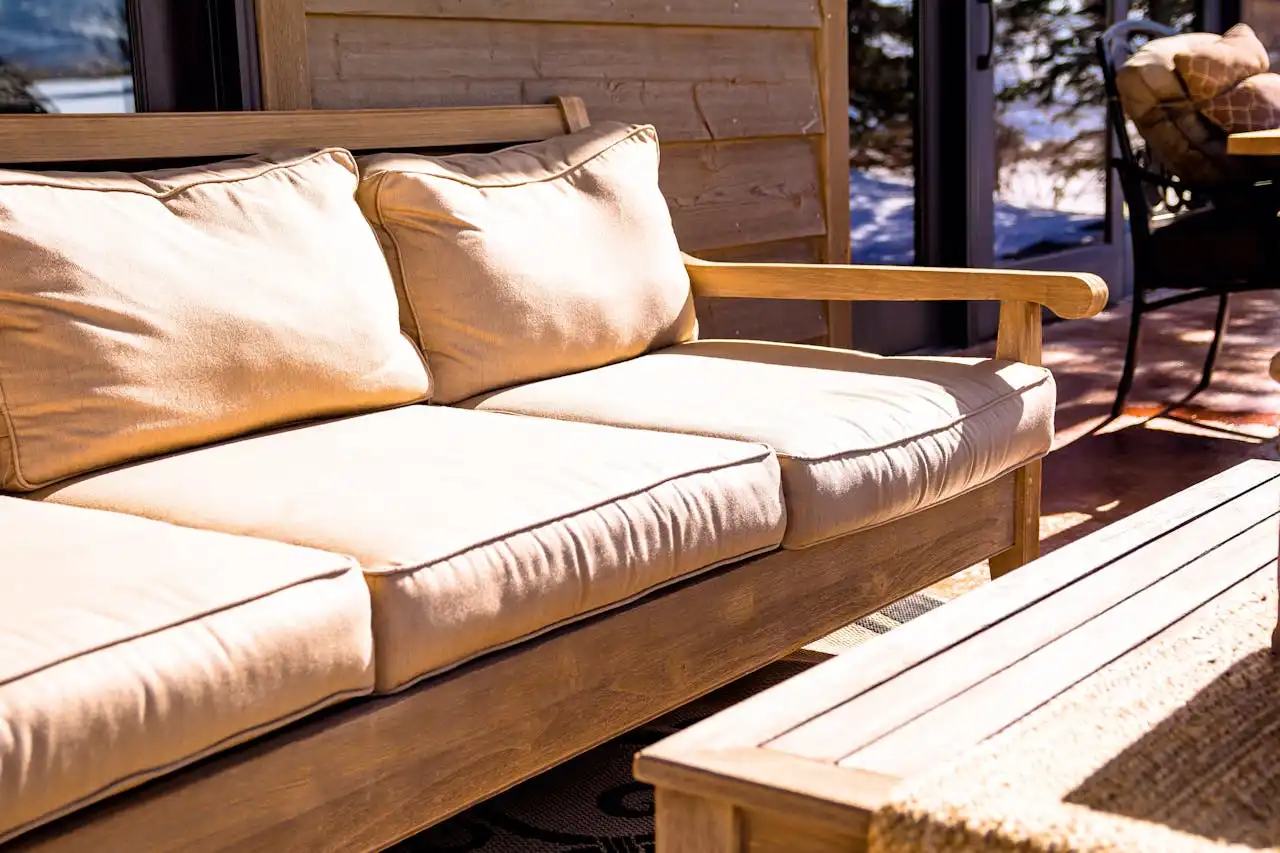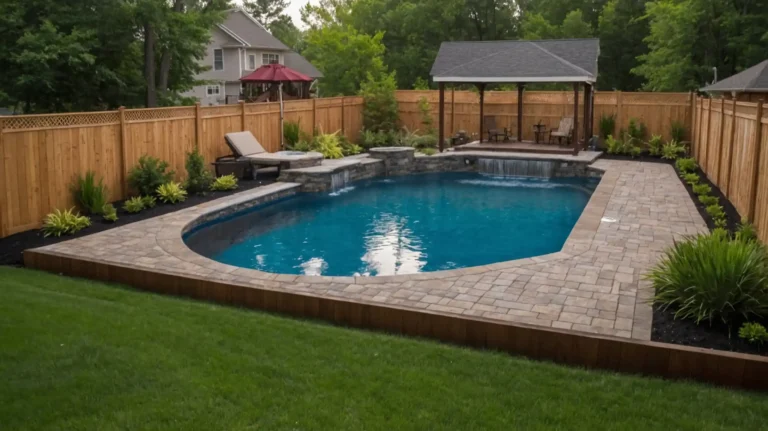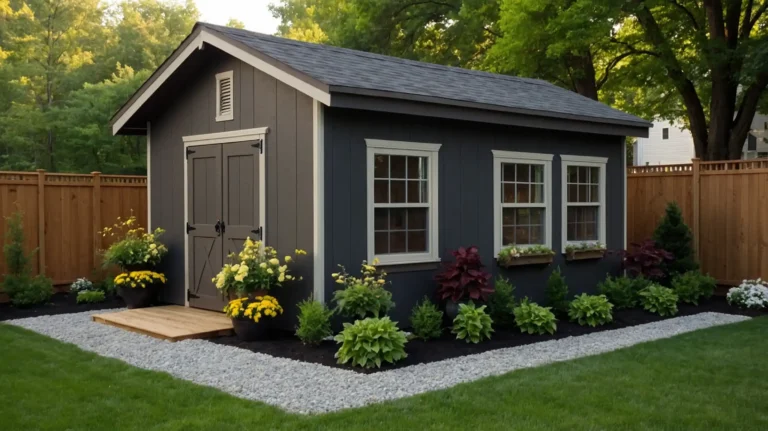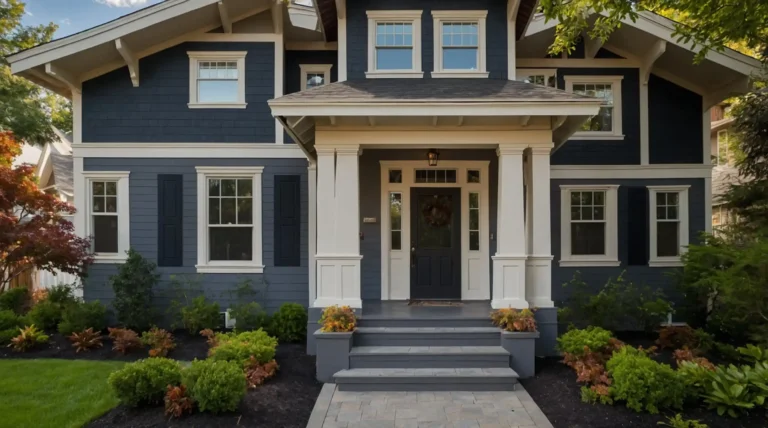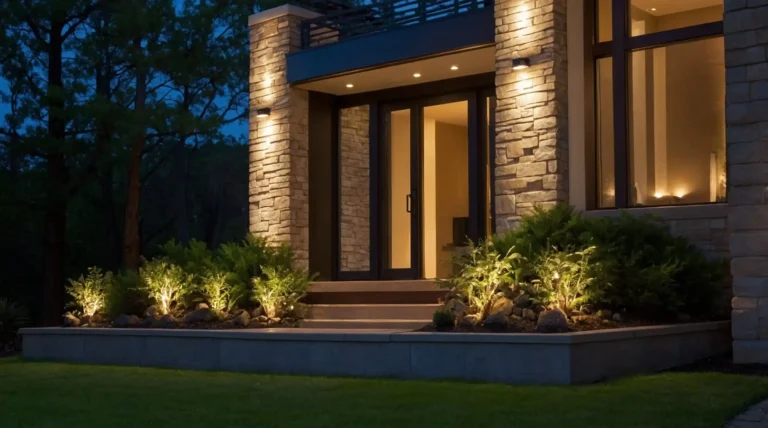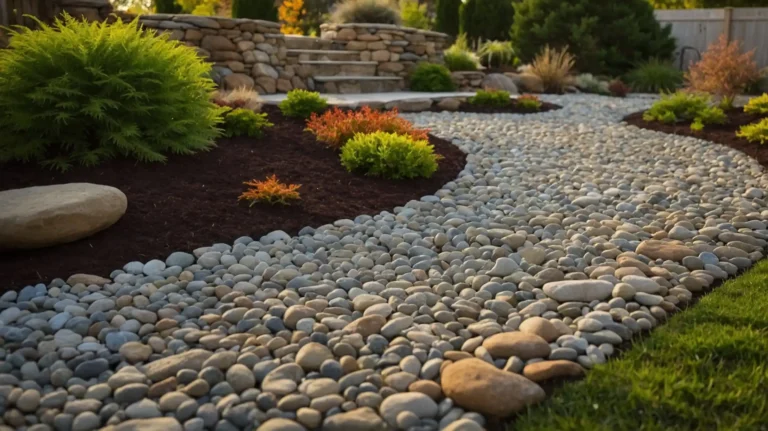How to Create a Zen-Inspired Outdoor Space
You deserve a peaceful retreat where stress melts away and tranquility takes center stage. Creating a zen-inspired outdoor space transforms your backyard into a sanctuary of calm.
This ancient philosophy emphasizes simplicity, natural beauty, and mindful living. Your outdoor space can become a place where you reconnect with nature and find inner peace.
Let’s explore how you can design your own zen paradise right outside your door.
Understanding Zen Design Principles
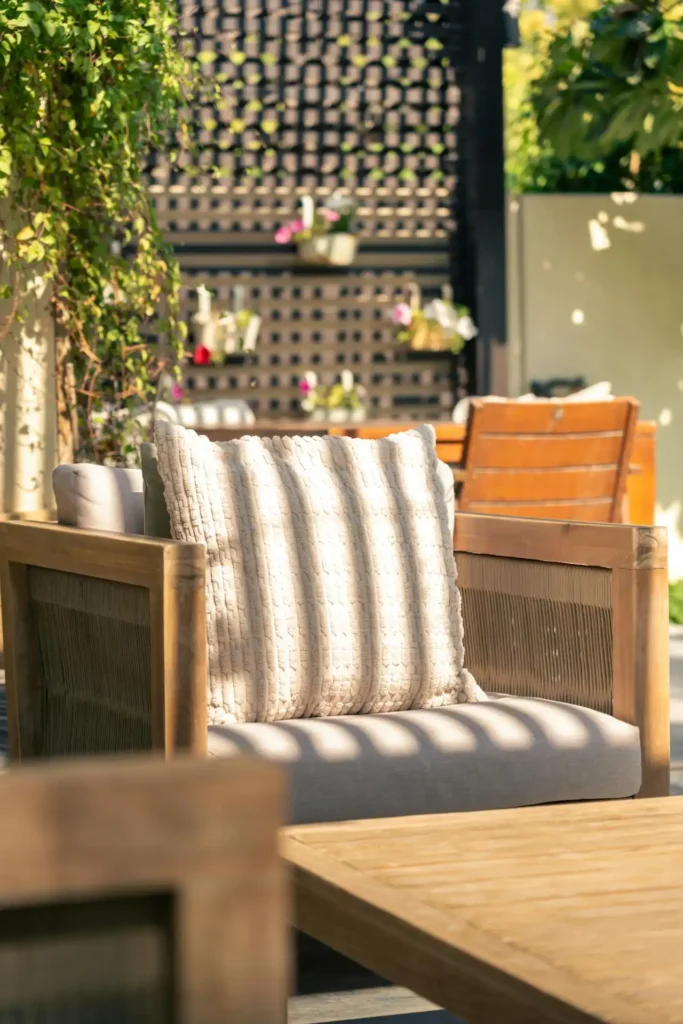
Before you start rearranging furniture or planting new flowers, you need to understand what makes a space truly Zen.
The foundation of Zen design rests on simplicity, balance, and harmony with nature.
You’ll want to embrace the concept of “less is more.” Zen spaces avoid clutter and unnecessary decorations.
Instead, they focus on clean lines, natural materials, and purposeful placement of each element.
Balance plays a crucial role in your design decisions. You’re not looking for perfect symmetry, but rather a sense of visual equilibrium.
This might mean pairing a large boulder with several smaller stones, or balancing a tall bamboo screen with low-growing ground cover.
Natural elements form the heart of Zen design. You’ll incorporate materials like stone, wood, water, and plants to create connections with the natural world.
These elements should feel organic and unforced, as if they’ve always belonged in your space.
Color palettes in zen spaces tend toward earth tones and muted hues. You’ll find success with grays, beiges, soft greens, and warm browns.
These colors promote relaxation and create a sense of unity throughout your outdoor area.
Choosing the Right Location
Your zen space needs the perfect spot to truly shine. You’ll want to scout your property for areas that naturally lend themselves to peaceful contemplation.
Look for locations that offer some privacy from neighbors and street traffic. Consider the sun patterns throughout your yard during different times of day.
You don’t need complete isolation, but you want to minimize distractions that pull your attention away from the present moment.
Morning sun creates gentle, warming light that’s perfect for meditation or quiet reflection. Afternoon shade provides relief during hot summer days.
Pay attention to existing features that you can incorporate into your design. Wind patterns matter more than you might think.
A mature tree can become a natural focal point, while a sloped area might be perfect for a terraced garden or water feature.
You’ll want to avoid spots that experience harsh winds, but gentle breezes can add soothing sounds and movement to your space.
Think about access from your home. Your zen space should feel like a natural extension of your living area, easily accessible but distinct enough to provide a sense of escape.
Creating Natural Water Features
Water brings life and movement to your zen outdoor space. The sound of flowing water masks unwanted noise while creating a focal point that draws your attention inward.
You don’t need an elaborate fountain to achieve this effect. A simple bamboo water feature or small recirculating stream can provide the gentle sounds you’re seeking.
Consider a reflecting pool or still water basin. Rain chains offer another water element that’s both functional and beautiful.
These features create mirror-like surfaces that double the visual impact of surrounding plants and sky. The stillness promotes contemplation and mindfulness.
If you’re working with a larger budget, a small koi pond adds both visual interest and the meditative quality of watching fish swim.
The maintenance requirements are higher, but the rewards include a living ecosystem in your backyard.
They guide rainwater from your roof to the ground in a controlled, artistic way that creates pleasant sounds during storms.
For smaller spaces, consider a tabletop fountain or wall-mounted water feature. These options provide the benefits of moving water without requiring significant space or installation.
Selecting Plants and Greenery
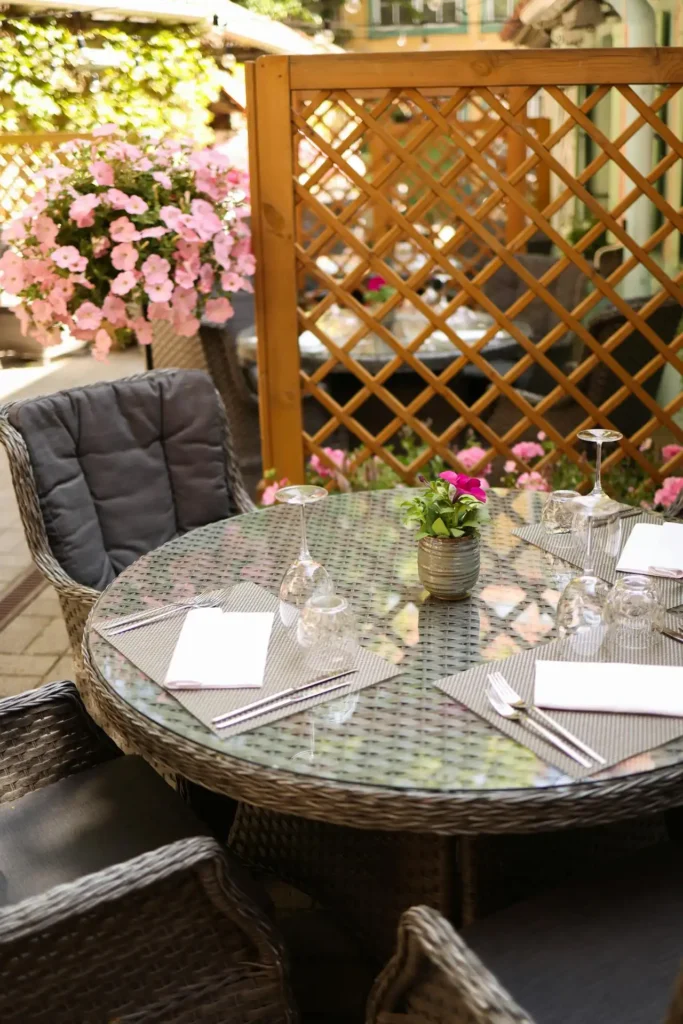
Your plant choices should reflect the zen principles of simplicity and natural beauty. You’ll want to create layers of green that provide visual interest without overwhelming the space.
Bamboo stands out as the quintessential zen plant. It grows quickly, provides natural screening, and creates gentle rustling sounds in the breeze.
Choose clumping varieties to avoid invasive spreading. Ornamental grasses add movement and texture to your design.
They’re low-maintenance and provide year-round interest, even in winter when their dried seed heads catch morning frost.
Moss creates a carpet-like ground cover that feels soft and natural. It thrives in shaded areas and requires minimal maintenance once established.
Walking on moss paths connects you directly with the earth. Their branching patterns create interesting shadows and focal points throughout the year.
Japanese maples bring architectural beauty with their distinctive leaf shapes and seasonal color changes.
Ferns add lush, forest-like qualities to shaded areas. They pair beautifully with stones and water features, creating the feeling of a natural woodland glade.
Evergreen shrubs provide structure and year-round color. Choose varieties with interesting textures or unusual growth patterns to add visual appeal without breaking the zen aesthetic.
Incorporating Natural Materials
The materials you choose define the character of your zen space. Natural stones, weathered wood, and other organic materials create authenticity and connection to the earth.
Large boulders serve as anchor points in your design. Position them thoughtfully to create natural seating areas or meditation spots.
The weight and permanence of stone provides grounding energy. Raking gravel into patterns becomes a meditative practice itself.
Gravel and small stones create pathways and ground cover. Different sizes and colors allow you to define areas while maintaining visual flow.
Wood decking or platforms provide elevated seating areas that keep you connected to the space while offering comfort.
Choose naturally weather-resistant woods or allow softer woods to gray naturally over time. They also tend to look out of place in Zen-inspired settings.
Avoid synthetic materials whenever possible. Plastic, artificial stone, and composite materials lack the authentic energy that natural materials provide.
Consider the aging process of your materials. Zen design embraces the beauty of weathering and patina.
Materials that improve with age contribute to the timeless quality you’re trying to achieve.
Designing Seating and Meditation Areas
Your zen space needs comfortable areas where you can sit quietly and enjoy the peaceful atmosphere you’ve created. The seating should feel intentional but not dominate the space.
Simple wooden benches work beautifully in Zen settings. Choose designs with clean lines and minimal ornamentation.
The bench should invite sitting while blending seamlessly with the natural surroundings.
Stone seating areas provide durability and natural beauty. Large flat stones can serve as informal seats, while carved stone benches offer more formal seating options.
Ground-level seating connects you more directly with the earth. Consider platforms or raised beds where you can sit cross-legged for meditation or contemplation.
Cushions and soft furnishings should be weather-resistant and in earth tones. You want comfort without introducing jarring colors or patterns that disrupt the peaceful atmosphere.
Position seating to take advantage of the best views in your space. Create multiple seating options for different times of day and different moods.
Whether that’s a water feature, interesting plant grouping, or distant view, your seating should enhance the experience of being in the space.
Morning meditation might call for east-facing seating, while evening reflection benefits from west-facing positions.
Adding Lighting Elements
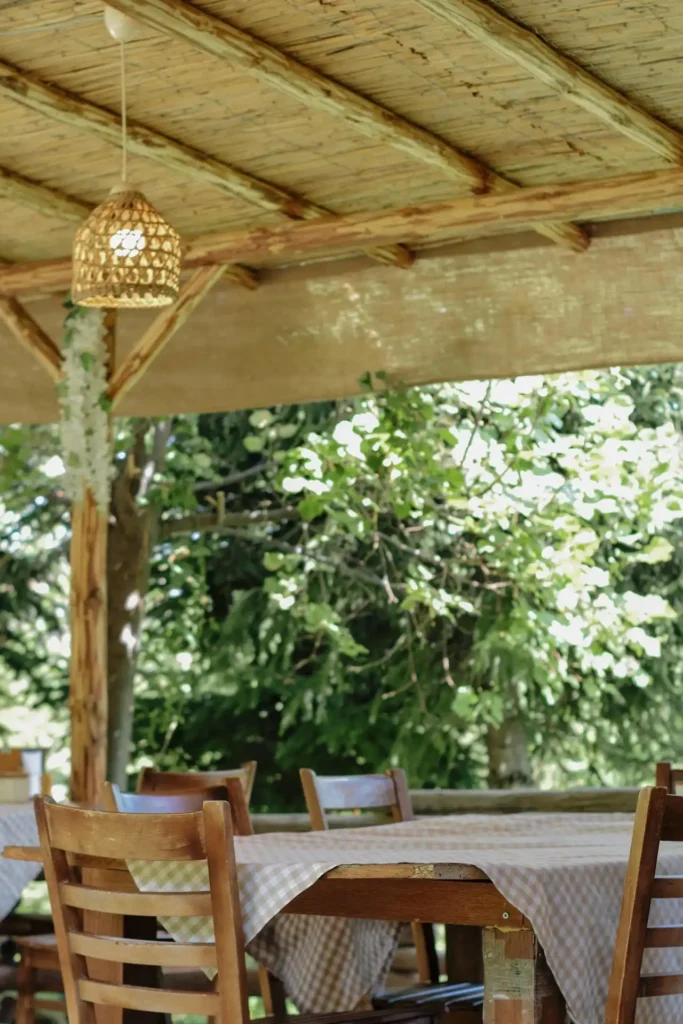
Lighting extends the usability of your zen space into evening hours while creating dramatic shadows and highlighting key features.
The goal is subtle illumination that enhances rather than overwhelms. Solar-powered lights offer eco-friendly lighting solutions that don’t require electrical work.
Choose designs that complement your natural aesthetic rather than standing out as obviously artificial.
Candles and lanterns provide warm, flickering light that promotes relaxation. Use battery-operated candles for safety, or real candles when you’re present to monitor them.
String lights can work in zen spaces if chosen carefully. Warm white LED lights strung through trees or along pathways create gentle illumination without harsh brightness.
Uplighting highlights the architectural qualities of plants and stones. Small spotlights placed at the base of trees or large rocks create dramatic shadows and depth.
Path lighting ensures safe navigation while defining walkways. Choose fixtures that blend with your material palette and provide just enough light for safety.
Avoid over-lighting your space. Zen design embraces shadows and mystery. Too much light destroys the intimate, contemplative atmosphere you’re working to create.
Minimizing Clutter and Distractions
Zen spaces thrive on simplicity, which means you need to be ruthless about eliminating unnecessary elements. Every item in your space should serve a purpose or bring you joy.
Store garden tools and maintenance equipment out of sight. A small shed or storage bench keeps necessary items accessible while maintaining the clean aesthetic of your zen space.
Limit decorative objects to a few carefully chosen pieces. Mass plantings of the same species create more visual impact and feel more natural.
A single sculpture or interesting rock formation makes more impact than multiple smaller decorations scattered throughout the space.
Organize plantings in clean, purposeful groupings rather than scattered individual specimens.
Create designated pathways that guide movement through the space. This prevents random trampling and helps maintain the intentional design of your zen garden.
Regular maintenance prevents the accumulation of debris and overgrowth that can make spaces feel chaotic. Weekly tidying sessions keep your zen space looking intentional and cared for.
Consider seasonal storage for items that aren’t year-round necessities. Cushions, decorative pots, and seasonal plants can be stored during off-seasons to maintain clean lines.
Incorporating Zen Accessories
The right accessories add personality and function to your zen space without overwhelming the natural beauty you’ve created.
Choose items that enhance rather than compete with your design.
Wind chimes create gentle sounds that mask traffic noise and add auditory interest. Choose materials like bamboo or metal that complement your overall aesthetic.
Meditation bells or singing bowls can mark the beginning and end of contemplative sessions. The clear tones help transition your mind into peaceful states.
Stone sculptures or cairns provide focal points that feel natural in outdoor settings. You can create these yourself or purchase pieces that speak to your aesthetic sensibilities.
Outdoor meditation cushions make ground-level sitting more comfortable. Choose weather-resistant fabrics in earth tones that coordinate with your color palette.
Bird feeders and baths attract wildlife that adds life and movement to your space. Position them where you can observe visiting birds from your seating areas.
Weather-resistant books or journals stored in a waterproof container allow you to record thoughts or read inspirational passages in your peaceful setting.
Maintaining Your Zen Space
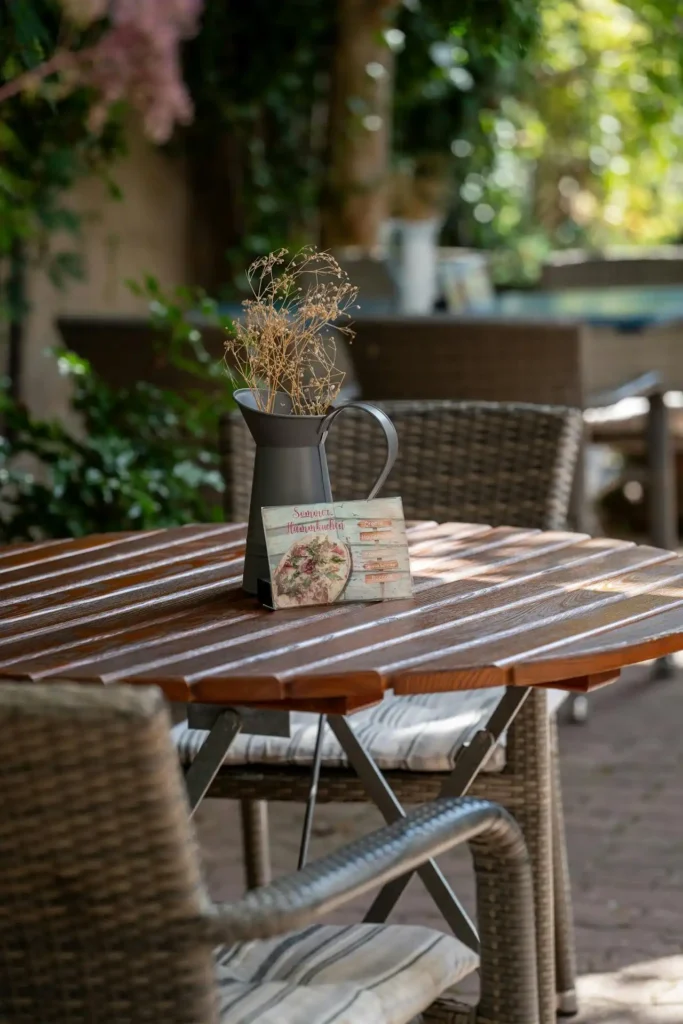
A zen space requires ongoing care to maintain its peaceful, intentional appearance. Regular maintenance becomes part of the meditative practice of tending your garden.
Develop a routine for basic upkeep tasks like weeding, pruning, and cleaning water features.
These activities can become mindful practices that connect you more deeply with your space.
Seasonal transitions offer opportunities to refresh and renew your Zen garden. Monitor plant growth to ensure your design proportions remain balanced.
Add new plantings in spring, protect sensitive plants in winter, and adjust elements as needed throughout the year.
Some plants may need regular pruning to maintain their intended size and shape within your composition.
Keep pathways clear and surfaces clean. Sweep away leaves and debris regularly to maintain the intentional appearance of your space.
Water features require regular attention to prevent algae growth and maintain proper function. Clean filters, add water as needed, and winterize systems in cold climates.
Pay attention to how your space evolves over time. Plants grow, materials weather, and your needs may change. Embrace these changes as part of the natural evolution of your zen garden.
Conclusion
Your Zen-inspired outdoor space becomes a daily retreat from life’s stresses.
Through thoughtful design and regular care, you create lasting peace in your own backyard sanctuary.

